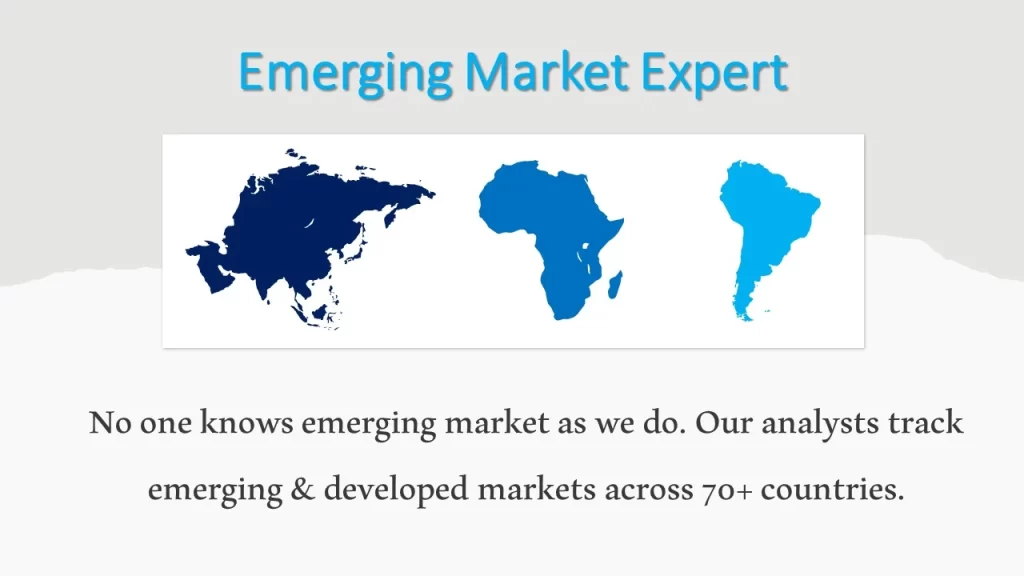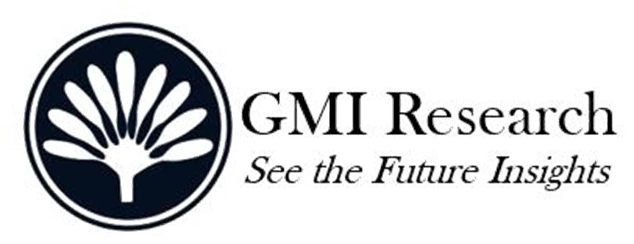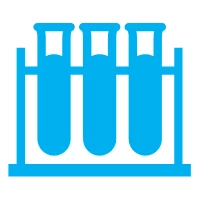Industrial Enzymes Market Size, Share & Trends Analysis – Growth Opportunities & Forecast, 2023-2030
GMI Research analysis indicates that the Industrial Enzymes Market size was estimated at USD 7.1 billion in 2022 and is slated to register a single digit CAGR of 6.1% over the forecast period, and is projected to reach USD 11.4 billion in 2030.
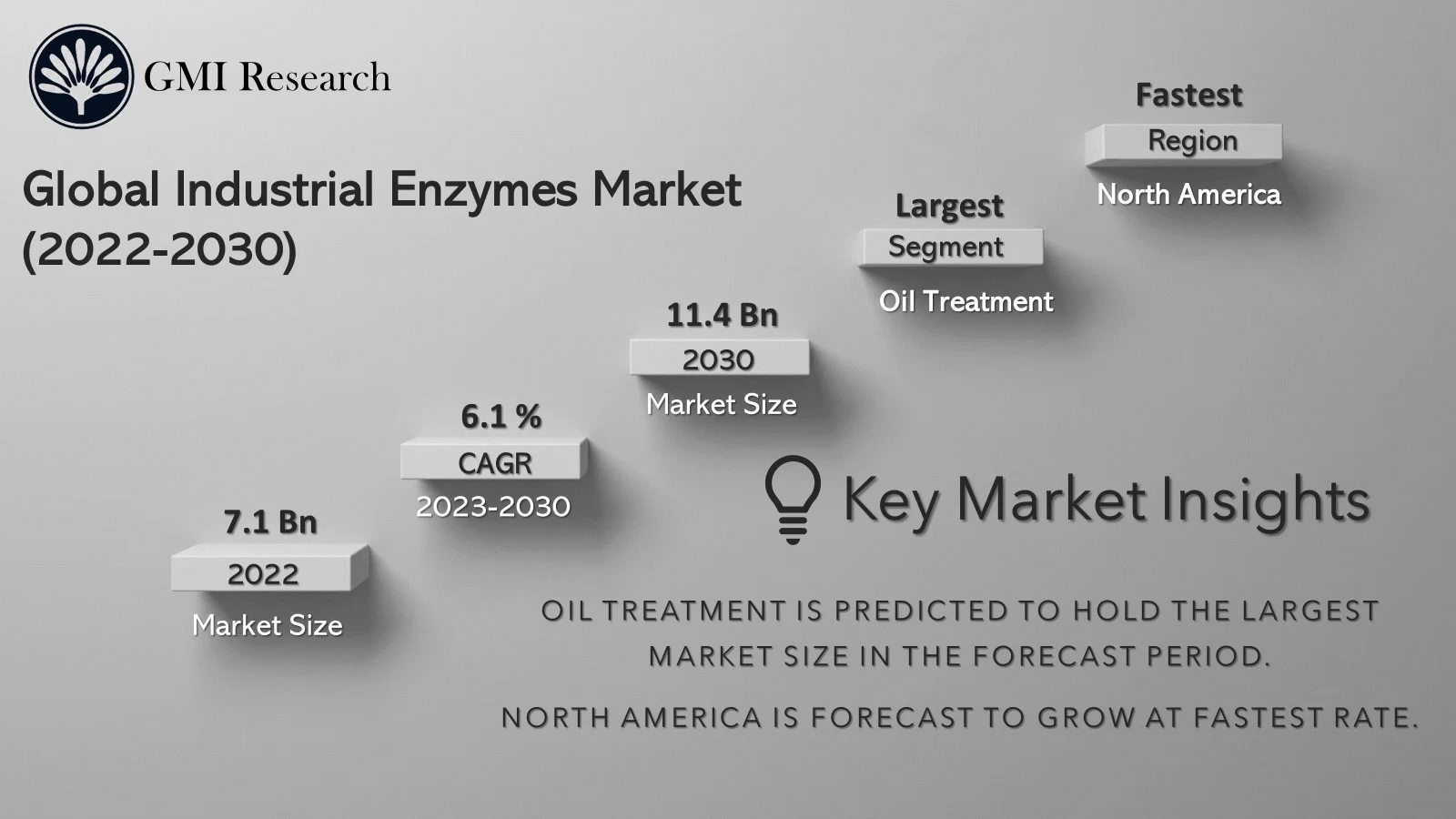
To have an edge over the competition by knowing the market dynamics and current trends of “Global Industrial enzymes Market”, request for Sample Report here
Major Industrial Enzymes Market Drivers
The global industrial enzymes market has been strongly impacted positively by the existence of different end-use industries including food and beverages, demand for eco-friendly practices, advancements in the nutraceutical segment, and an rising need for bioethanol. Industries in food processing including brewing, baking industry, and fruit juice processing are the biggest users of food enzymes. This application is rising rapidly, propelled by the growing population across the globe and its rising buying power. Rising health awareness contributes to the increasing demand for better food quality, enhanced nutritional value, and safer production procedures. The rising need for high-quality foods with natural flavor and taste is a prevalent trend among today’s customers. This trend has boosted the development of tasty and flavored processed foods through the usage of industrial enzyme applications.
Enzymes, like cellulase, amylase, polygalacturonase, lipase, pectinase, beta-glucanase, chymosin, arabinanase, protease, and others are essential catalysts in breaking down vitamins and nutrients during metabolic reactions. They facilitate the inter-conversion of complex molecules into smaller ones. These food enzymes have become essential ingredients in the food additives industry globally. The food industry is consistently involved in introducing new dairy products, food items, and beverages for customers. As new products emerge in the food and beverage industry, the usage of enzymes in this segment continues to rise. The rising innovation and technological advancements in the food industry have led to the widespread application of industrial enzymes, specifically in sweetener and fat modification technology. This trend and factors are predicted to propel the market demand for industrial enzyme in the forecast period.
The rise in demand for eco-friendly energy sources and sustainable items is predicted to foster the global industrial enzymes market growth. Enzymes are in high demand due to the rise in the prevalence of clean and renewable substitutes. In the bioethanol manufacturing procedures, enzymatic hydrolysis is essential for obtaining fermented sugar before the final fermentation procedure. Enzymes obtained through biotechnology are identified as a sustainable alternative to traditional chemicals, offering a solution to challenges linked with synthetic chemicals. Synthetic chemicals utilized in industrial procedures are dangerous to the atmosphere. Benzoate-free enzymes are utilized to improve the nutritional content of food and feed. These enzymes decrease waste utilization, byproduct generation, and chemical waste while exhibiting minimal risks to both humans and the environment. Plant-based enzymes are estimated to be more cost-effective, environmentally friendly, and safer.
In addition, the demand for industrial enzymes is high in the detergent industry because it is derived from proteases, lipases, amylases, and many more, which are finding growing utilization in the detergent composition. In laundry detergents, these enzymes remove stains such as perspiration and protein stains. Particularly, Lipases are used to remove oily marks. Industrial enzymes, being energy-efficient and eco-friendly, prove valuable in automatic dishwashing and cleaning applications involving detergents. For instance, Unilever joined hands with India Glycols and Lanza Tech to introduce surfactants from industrial carbon emissions by 2022. This growing need for industrial enzymes in detergent-based applications is driving the industrial enzyme market growth in the personal care segment and offering different market growth opportunities.
Do you want to know more about the Research process and detailed Methodology, Request Research Methodology of this report
The innovations in biotechnology and protein engineering are anticipated to present a substantial boost in industrial enzyme industry growth globally. Recent innovations in protein engineering technologies whether it is new or improved have led to the introduction of enzymes with improved performance and innovative functions. There are three approaches included in this field such as computational design, implementation of innovation scaffolding and compartmentalization strategies, and structure-guided protein design to enhance the effectiveness of multienzyme systems. Recent discoveries indicate develop both immobilization and enzymatic components simultaneously through genetic modifications of enzymes and optimization of binding chemistry for oriented immobilization and site-specific. Common applications include developed biofuel synthesis utilizing enzymes with modified cofactor specificity, exhibiting altered substrate specificities, high-value chiral chemical production with enzymes, and swift cellulose degradation with multienzyme scaffold assemblies. In addition, protein engineering allows the improvement of key features and functional capabilities of selected enzymes. Innovations in this field allow precise modifications to develop the performance of enzymes when used as immobilized biocatalysts. These advancements are predicted to enhance the development of effective and stable biocatalysts with promise for challenging bioprocess applications. This, in turn, is predicted to have a positive impact on the demand for industrial enzymes in the global market.
Protease enzymes are expected to exhibit the largest CAGR in the forecast period
In food and beverage industry, the need for protease enzymes is rising because it has an essential role in different applications such as flavor enhancement, protein modification, dairy processing, and meat tenderization. The growing demand for convenient processed food products along with the rising need for enhanced texture, taste, and nutritional profiles, is propelling the demand for proteases in food applications. In addition, proteases find applications in environmental as well as waste management segments, specifically in the bioremediation of high-protein waste streams. Proteases play an important role in breaking down and degrading organic materials such as food waste, animal waste, and agricultural residues. The growing need for proteases in environmental and waste management applications is propelled by a rising emphasis on eco-friendly and sustainable waste treatment solutions.
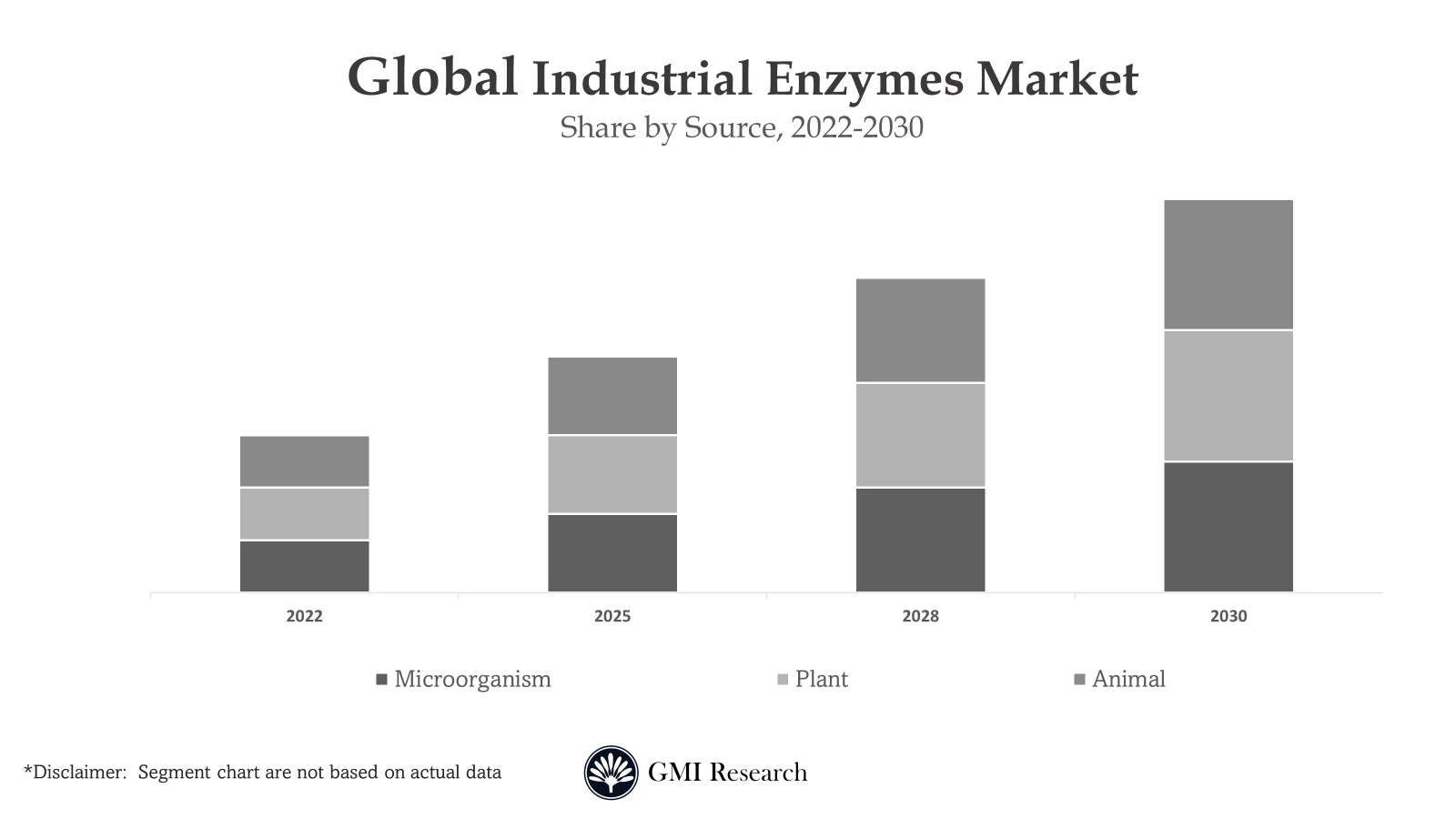
The rise in demand for protease enzymes is driven by trends in the food and beverage market and the waste management segment. Businesses in these fields acknowledge the benefits of proteases, including developed product performance, streamlined production procedures, and more eco-friendly waste management exercises.
Oil treatment segment is projected to dominate largest market size of global industrial enzymes market, by application
Enzymes are witnessing a growing demand in oil treatment applications, especially in Enhanced Oil Recovery techniques. They provide valuable benefits by altering the properties of reservoir fluids, leading to improved oil extraction. Enzymes are essential in decreasing oil viscosity and developing its flowability, resulting in developed oil displacement and extraction rates. This, in turn, contributes to increased production rates and improved oil recovery.
Enzymes are important in both the emulsification and demulsification procedures related to oil treatment. Emulsification involves breaking down oil-water interfaces, facilitating the effective separation of oil from water during extraction or production procedures. Conversely, Demulsification entails breaking down stable oil-water emulsions, enabling the effective elimination of water from the crude oil. Enzymes function as catalysts in these procedures, substantially developing the effectiveness of oil-water separation.
These enzyme-driven enhancement in oil treatment deliver substantial business advantages. By upgrading oil extraction rates, market players can attain higher production levels and increased profitability. Furthermore, the efficiency of the separation of oil and water develops the quality of the extracted oil, leading to higher value and developed product integrity. The usage of enzymes in these procedures develops the effectiveness and cost-efficiency of oil treatment functions, delivering competitive benefits for businesses in the oil and gas industry.
In case, any of your pain points areas are not covered in the current scope of this report, Request for Free Customization here
North America is experiencing the highest market size in the forecast period
North America region is predicted to witness growth due to significant market presence of different end-use companies in the food and beverage, laundry detergent, personal care & cosmetics industries, and many more along with high potential for research and development activities. Moreover, in North America, there is a notable aim for sustainability and eco-friendly practices. Enzymes present a sustainable substitute to conventional chemical procedures due to their biodegradability, and minimal environmental, and renewability impact. To address the expectations of environmentally aware customers and minimize ecological footprints, companies are progressively embracing enzyme-based solutions.
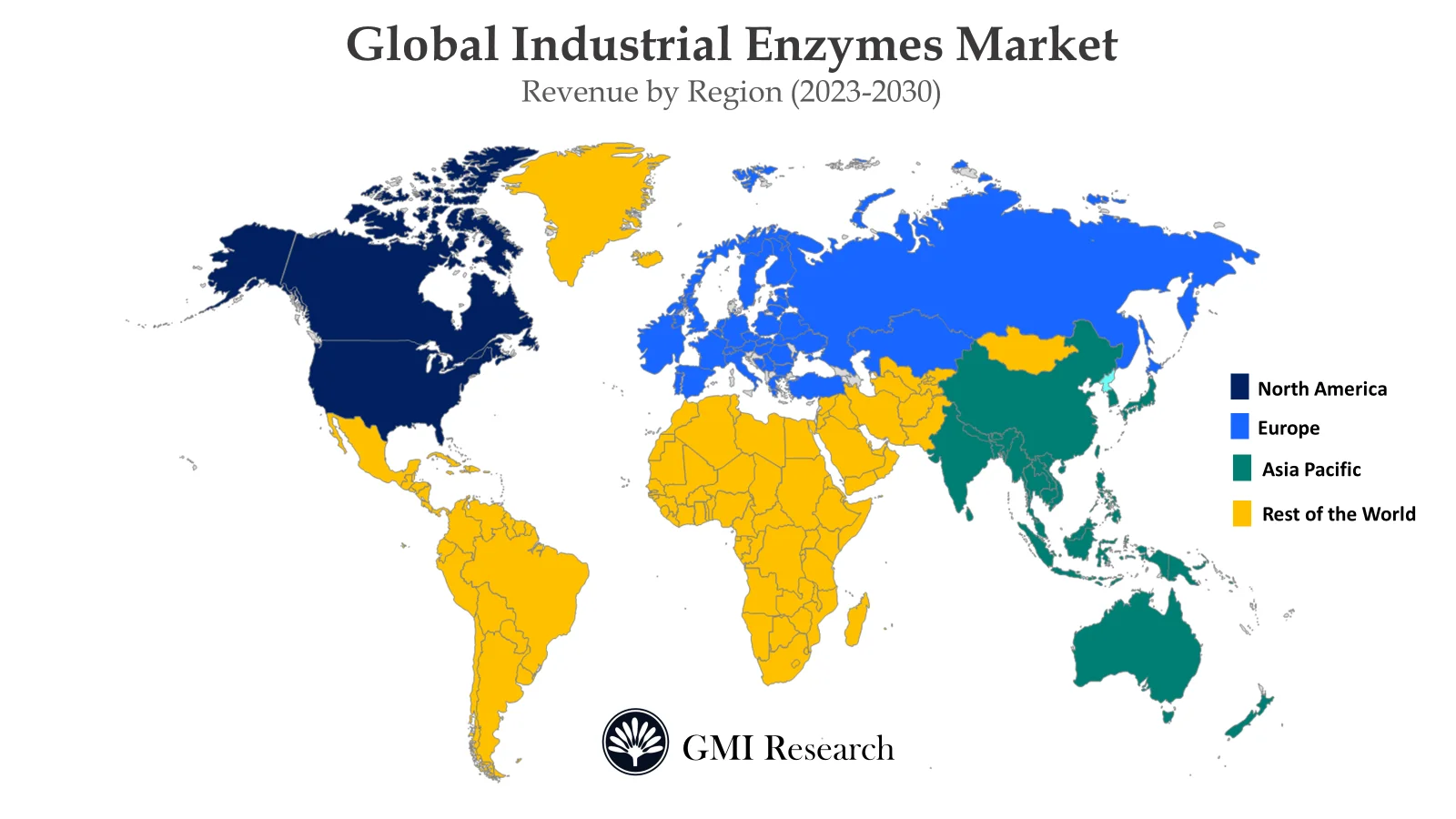
Top Market Players
Various notable players operating in the market include Novozymes, BASF SE, DSM, DuPont Danisco, NOVUS INTERNATIONAL, Associated British Foods Plc, Advanced Enzyme Technologies, Lesaffre, Adisseo, Chr. Hansen Holding A/S, Koninklijke DSM N.V. BioProcess Algae, LLC, among others.
Key Developments:
-
- In 2023, BASF and Cargill announced an expansion of their partnership to bring advanced enzyme-derived solutions to the market.
- In 2022, NZYMb.CO and CHRH.CO joined hands to strengthen its product portfolio and increase its reach in the market.
- In 2022, BASF joined hands with Lallemand Inc. to divest the Nutrilife of BASF a baking enzymes business and portfolio.
- In 2021, Novozymes entered into a partnership Novo Nordisk Pharmatech to develop high-quality technical enzymes in order to encourage the production processes in the biopharmaceutical industry. This collaboration is intended to help Novozymes to expand the processes in the regenerative medicines market.
- In 2021, BASF entered into an agreement with Sandoz GmbH, a subsidiary of Novartis, to make an investment in Kundl/Schaftenau Campus in Austria. This agreement allows BASF SE to expand its production footprint for enzymes and biotechnology products.
- In 2021, Advanced Enzyme Technologies acquired 51% in SciTech Specialities Private Limited (SSPL) by subscribing to 492,630 equity shares of SSPL and purchasing 27,778 equity shares from a few selling shareholders, i.e., 520,408 equity shares, i.e., 51% of paid-up share capital of SSPL. The acquisition will help Advanced Enzyme leverage expand its business-to-consumer segments.
- In 2019, Novozymes expanded its presence in East Africa in order to allow to meet the changing consumer’s need. The company aimed to offer sustainable biological solutions and strengthen their existing relationships.
- In 2018, Kerry announced the opening of first plant in Moscow. The new production and warehouse complex covers 7,000 square meters and produced ingredients for the meat processing and snacks market.
Segments Covered in the Report:
The Global Industrial Enzymes Market has been segmented on the basis of Type, Source and Application. Based on the Type, the market is segmented into Proteases, Carbohydrases, Lipases, Polymerases & Nucleases, Other Types. Based on the Source, the market is segmented into Microorganism, Plant, Animal. Based on the Application, the market is segmented into Food & Beverages, Bioethanol, Textiles & Leather, Detergents, Paper & Pulp, Wastewater Treatment, Feed, Soil Treatment, Oil Treatment, Others.
For detailed scope of the “Industrial enzyme Market” report request a Sample Copy of the report
|
Report Coverage |
Details |
| Market Revenues (2022) |
USD 7.1 billion |
| Market Base Year |
2022 |
| Market Forecast Period |
2023-2030 |
| Base Year & Forecast Units |
Revenues (USD Billion) |
| Market Segment | By Type, By Source, By Application, By Region |
| Regional Coverage | Asia Pacific, Europe, North America, and RoW |
| Companies Profiled | Novozymes, BASF SE, DSM, DuPont Danisco, NOVUS INTERNATIONAL, Associated British Foods Plc, Advanced Enzyme Technologies, Lesaffre, Adisseo, Chr. Hansen Holding A/S, Koninklijke DSM N.V. BioProcess Algae, LLC, among others; a total of 12 companies covered. |
| 25% Free Customization Available | We will customize this report up to 25% as a free customization to address our client’s specific requirements |
Market Segmentation
Global Industrial enzymes Market by Type
-
- Carbohydrases
- Proteases
- Lipases
- Polymerases & Nucleases
- Other Types
Global Industrial enzymes Market by Source
-
- Microorganism
- Plant
- Animal
Global Industrial enzymes Market by Application
-
- Food & Beverages
- Bioethanol
- Textiles & Leather
- Detergents
- Paper & Pulp
- Wastewater Treatment
- Feed
- Soil Treatment
- Oil Treatment
- Others
Global Industrial enzyme Market by Region
-
-
North America Industrial enzymes Market (Option 1: As a part of the free 25% customization)
- By Type
- By Source
- By Application
- US Market All-Up
- Canada Market All-Up
-
Europe Industrial enzymes Market (Option 2: As a part of the free 25% customization)
- By Type
- By Source
- By Application
- UK Market All-Up
- Germany Market All-Up
- France Market All-Up
- Spain Market All-Up
- Rest of Europe Market All-Up
-
Asia-Pacific Industrial enzymes Market (Option 3: As a part of the free 25% customization)
- By Type
- By Source
- By Application
- China Market All-Up
- India Market All-Up
- Japan Market All-Up
- Rest of APAC Market All-Up
-
RoW Industrial enzymes Market (Option 4: As a part of the free 25% customization)
- By Type
- By Source
- By Application
- Brazil Market All-Up
- South Africa Market All-Up
- Saudi Arabia Market All-Up
- UAE Market All-Up
- Rest of world (remaining countries of the LAMEA region) Market All-Up
-
Major Players Operating in the Industrial enzyme (Option 5: As a part of the Free 25% Customization – Profiles of 5 Additional Companies of your Choice)
-
- BASF SE
- Novozymes
- DuPont Danisco
- DSM
- NOVUS INTERNATIONAL
- Associated British Foods Plc
- Chr. Hansen Holding A/S
- Advanced Enzyme Technologies
- Lesaffre
- Adisseo
- BioProcess Algae, LLC
- Koninklijke DSM N.V.
Frequently Asked Question About This Report
Industrial Enzymes Market
Related Reports
- Published Date: Nov- 2023
- Report Format: Excel/PPT
- Report Code: UP1825-001001
Licensing Options
Single-User License:
The report is used by the purchaser (One Individual) only
Multi-User License:Report is shared with maximum 5 users (employees) including the purchaser of the purchasing corporation only
Corporate License:
Report is shared with unlimited user (employees) of the purchasing corporation only
The report is used by the purchaser (One Individual) only
Multi-User License:Report is shared with maximum 5 users (employees) including the purchaser of the purchasing corporation only
Corporate License:
Report is shared with unlimited user (employees) of the purchasing corporation only
Industrial Enzymes Market Size, Share & Trends Analysis – Growth Opportunities & Forecast, 2023-2030
$ 4,499.00 – $ 6,649.00
Why GMI Research


